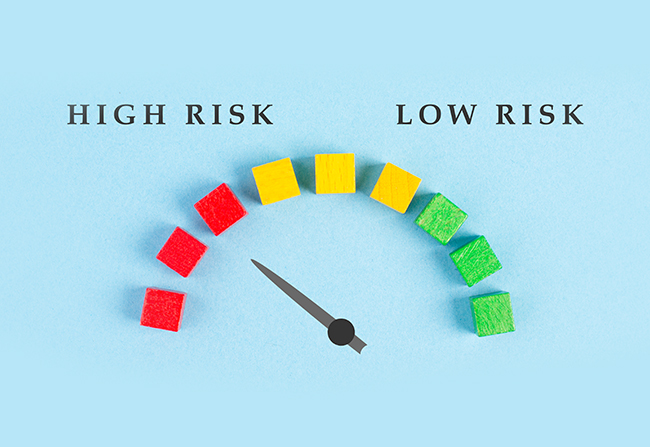
Choosing a trading style that suits your personality, risk tolerance, and time availability is crucial for long-term success in the markets. Two of the most popular trading styles are day trading and swing trading, each with its own unique set of characteristics and strategies. Understanding the differences between these approaches can help you determine which style aligns with your goals and lifestyle.
Day trading involves making multiple trades within a single day, capitalizing on short-term price movements. It requires a fast-paced, high-energy approach and often utilizes technical analysis to identify opportunities. Swing trading, on the other hand, involves holding positions for several days or weeks to take advantage of medium-term trends. It tends to be less intense and requires patience, allowing traders to focus on broader market movements rather than reacting to minute-to-minute fluctuations.
Key Differences Between Day Trading and Swing Trading:
One of the main differences between day trading and swing trading is the time commitment. Day traders are required to be in front of their screens for long periods throughout the day, sometimes making dozens of trades. This is ideal for those who can dedicate significant time and have the ability to react quickly to market movements.
Swing traders, however, can work with a more flexible schedule. They typically enter trades with the intention of holding them for several days or even weeks, allowing them more time to assess market trends and make decisions without the pressure of immediate execution. This makes swing trading a good fit for people with limited time to devote to active trading or those who prefer a less intense trading environment.
Time Commitment and Market Hours:
Day traders operate within short timeframes, typically executing trades within minutes or hours. They need to closely monitor the markets throughout the day to catch brief price movements and capitalize on small profits. This often involves active participation from market open to close, which can be mentally exhausting. Day traders also rely on intraday charts (such as 1-minute, 5-minute, or 15-minute) to make quick decisions.
In contrast, swing traders hold their positions longer, focusing on daily or weekly charts. This means they don’t need to monitor the markets constantly. Swing traders often enter trades based on the analysis of medium-term trends, with positions lasting anywhere from a few days to several weeks. The less frequent trading and lower time commitment allow swing traders to maintain a healthier work-life balance compared to day traders.
Risk and Reward:
Both day trading and swing trading involve risk, but the risk profiles differ. Day trading typically offers smaller profits per trade, as the goal is to capitalize on small price movements. While this can result in a high win rate, the frequency of trades also increases the chances of losses. Because of this, day traders must be very disciplined and use strict risk management strategies to avoid significant drawdowns.
Swing trading, while also risky, tends to offer larger profit opportunities per trade. Since swing traders aim to capture larger price moves over a few days or weeks, they may take on more risk with fewer trades. The risk-to-reward ratio in swing trading is often more favorable, as traders can potentially earn more from each successful trade. However, the fewer trades mean fewer opportunities, so the swing trader’s success depends on picking the right opportunities with enough time to let them develop.
Which Style Is Right for You?
Choosing between day trading and swing trading depends on your lifestyle, risk tolerance, and trading goals. If you thrive in a fast-paced environment, can dedicate long hours to monitoring the markets, and enjoy the excitement of making quick decisions, day trading might be a good fit. However, it’s important to understand the mental and emotional toll that day trading can take, especially in volatile markets.
On the other hand, if you prefer a more balanced approach, have limited time to watch the markets, and can be patient with your trades, swing trading might be a better option. Swing trading allows you to take advantage of larger trends without the constant pressure of making quick decisions. It’s less demanding on your time and energy, but it still requires a solid understanding of technical analysis and a well-thought-out strategy.
Tools and Strategies for Both Styles:
Both day trading and swing trading require the use of certain tools to be successful. Day traders tend to rely heavily on intraday charts, technical indicators, and real-time news to make split-second decisions. Popular tools for day traders include moving averages, Bollinger Bands, and the Relative Strength Index (RSI) to identify overbought or oversold conditions.
Swing traders, on the other hand, often use longer-term charts, such as daily or weekly charts, to spot medium-term trends. They may use a combination of technical analysis and fundamental analysis to identify potential trades. Tools like trend lines, Fibonacci retracements, and support and resistance levels are essential for swing traders to identify entry and exit points.
Challenges in Day Trading and Swing Trading:
Day trading can be highly rewarding, but it’s not without its challenges. The most significant obstacle is the emotional toll it can take. The constant pressure of making quick decisions can lead to burnout, especially during periods of high volatility. Additionally, day traders must deal with transaction costs, as frequent trading means higher commissions and fees.
Swing trading presents its own challenges, too. While it offers more flexibility, swing traders must be able to handle the patience required to wait for the right setups. It’s also easy to fall into the trap of overanalyzing or holding onto losing trades for too long. Swing traders also need to stay disciplined to avoid getting caught up in short-term price fluctuations that don’t fit their longer-term strategy.
Conclusion:
Choosing between day trading and swing trading ultimately comes down to your personal preferences, goals, and available time. Both styles offer unique benefits and drawbacks, but with the right approach, either can be profitable. Day trading provides the excitement of fast-paced action and multiple opportunities, while swing trading offers more flexibility, with the potential for larger gains over a longer period.
Whichever style you choose, success in trading relies on discipline, a solid strategy, and emotional control. Understanding your risk tolerance and how much time you can devote to trading will help you decide which approach is right for you. Remember, there’s no one-size-fits-all solution—your trading style should be a reflection of your strengths, goals, and lifestyle.




